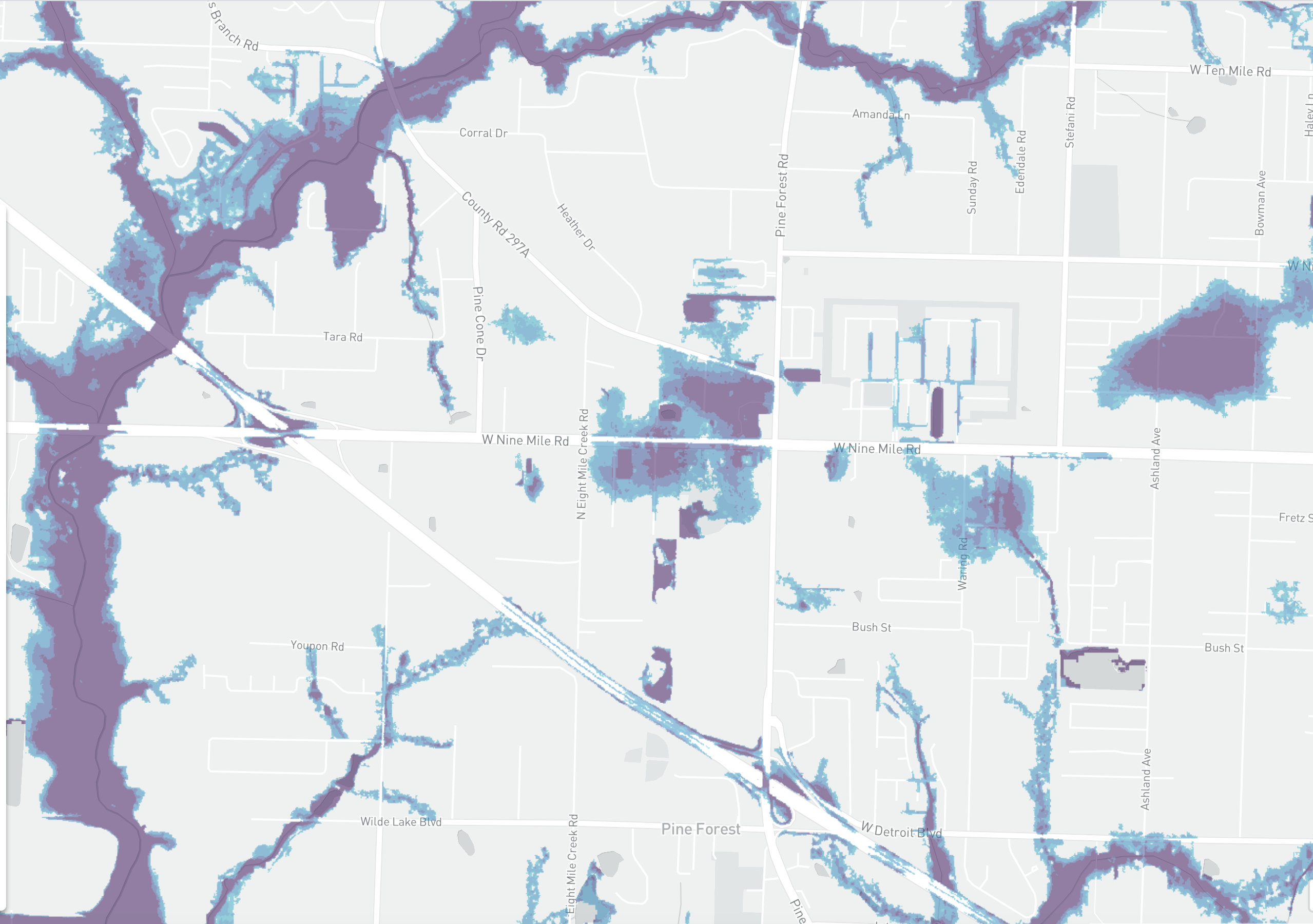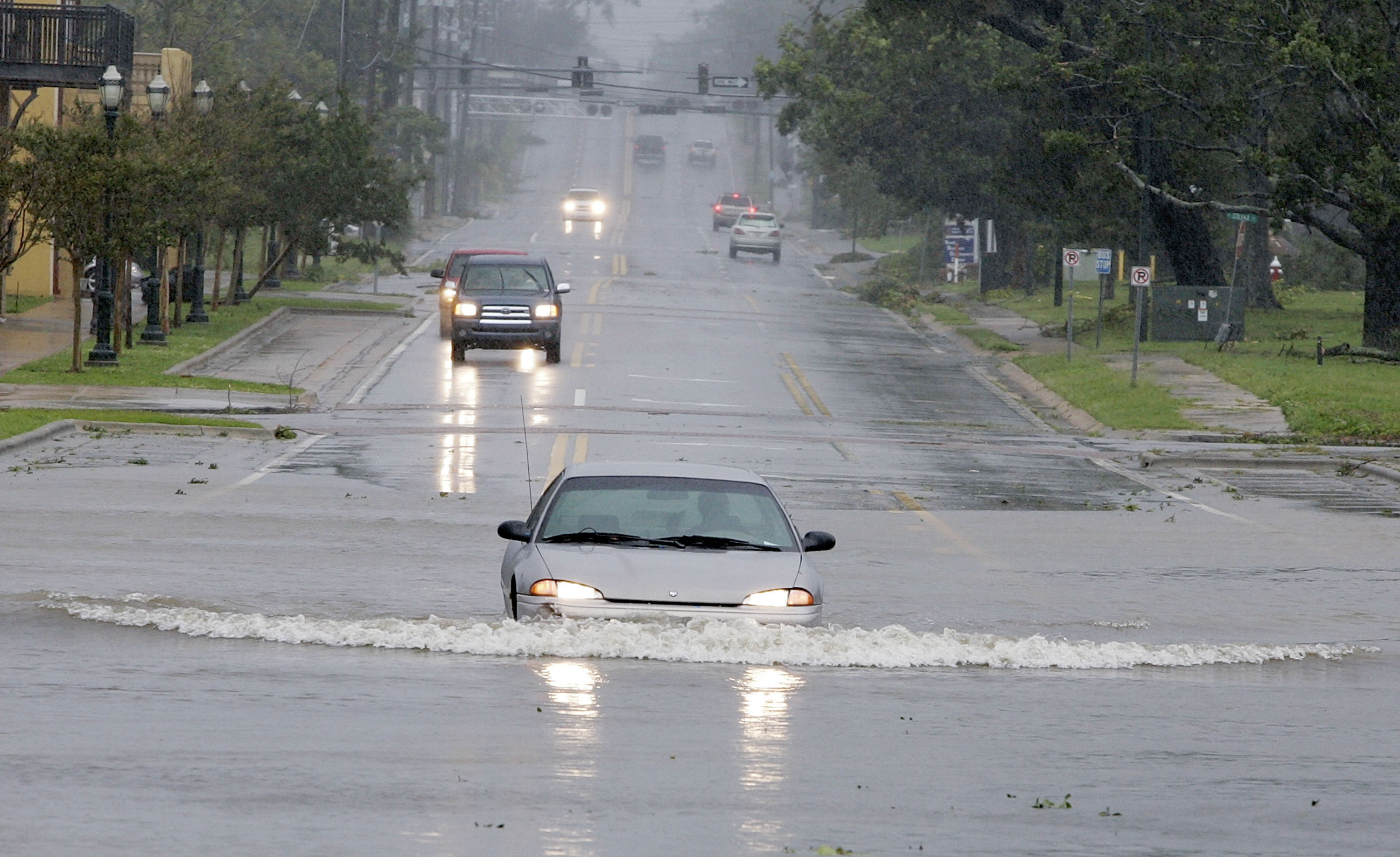 For most of America’s history, very few people had flood insurance because it was too risky for insurers and too expensive for homeowners. Then, in 1968, Congress created the National Flood Insurance Program (NFIP) to make affordable flood insurance available to homeowners, renters and businesses.
For most of America’s history, very few people had flood insurance because it was too risky for insurers and too expensive for homeowners. Then, in 1968, Congress created the National Flood Insurance Program (NFIP) to make affordable flood insurance available to homeowners, renters and businesses.
Today, the NFIP underwrites 5.1 million policies covering $1.3 trillion in property. In Florida alone, the program paid out $225 million in claims in 2019. It has been the salvation of millions of flood victims over the past five decades, but many others are financially ruined each year, either because they don’t have the insurance or because of the limits of their coverage.
The program itself stays afloat largely because of a $30 billion line of credit from taxpayers. Uncertainty has always hovered over the program because it was designed as a government subsidy. Most homeowners couldn’t afford premiums that reflected the full risk. The program expires periodically and when it does, Congress must extend it. Delays in extending it have led to brief disruptions to the program. It’s scheduled to expire again Sept. 30. If it does, the writing of new policies will likely be suspended.
The program’s single biggest challenge is the public’s failure to recognize the mounting risk of flooding due to sea-level rise and changing weather patterns. Right behind that, however, is the lack of public understanding of what the program does and doesn’t do. These misconceptions put thousands of homeowners in financial jeopardy every year.


Myth #1: "My homeowner's insurance covers flooding." Wrong!
Perhaps no rite of adulthood is a bigger blur than the intense flood of documents flying across the table toward a homeowner closing on the purchase of a new home. To name just a few, there’s the deed, the mortgage, transfer tax declarations, title insurance, certificate of occupancy and, of course, proof of homeowner’s insurance.
The average homebuyer could be forgiven for not understanding whether the blizzard of documents and policies includes flood coverage. This is especially true if the home isn’t in a federally designated high-risk flood zone and, as in Florida, where hurricane insurance is a frequent complement to homeowners’ insurance.
But the truth is, homeowners’ insurance does not cover floods. And, of special note to Floridians, hurricane insurance is called wind insurance for a reason. It covers wind damage, not flood damage.
 Myth #2: “Flood insurance covers all damages.”
Myth #2: “Flood insurance covers all damages.”
The first financial trapdoor people with flood insurance fall through is that it doesn’t cover living expenses, including rent, while their homes are being repaired. Many flood victims will need to find alternative living accommodations for months or even years. The process of recovery and reconstruction after a flood can be riddled with delay.
 Everything in the house that got wet has to be removed and, in most cases, discarded. This includes furniture, carpeting, appliances, electronics and clothing. Sheetrock up to just above the level of the flood has to be removed. Then the house and everything in it has to be allowed to fully dry because toxic mold is a health hazard. Damage has to be documented. Emergency repairs might have to be made. This phase alone can take weeks.
Everything in the house that got wet has to be removed and, in most cases, discarded. This includes furniture, carpeting, appliances, electronics and clothing. Sheetrock up to just above the level of the flood has to be removed. Then the house and everything in it has to be allowed to fully dry because toxic mold is a health hazard. Damage has to be documented. Emergency repairs might have to be made. This phase alone can take weeks.
The insurance adjuster showing up is just the beginning of what can be a prolonged, nerve-wracking ordeal. Once the claim is adjudicated and a check is written, the repairs begin. They can take months.
Then there’s the nightmare scenario in which homeowners might be out of their house for years. This happens when flooded homeowners are required by the terms of their local flood management plan to elevate their house before fixing it. This occurs if their house was built below what’s called “base flood elevation,” a determination that was likely made after the house was built. Elevating a house typically costs tens of thousands of dollars. Depending on the house, it could cost quite a bit more.
Those without flood insurance might be forced to sell their house at salvage value because they simply don’t have the money to elevate and repair it.

Others might be able to take advantage of federally funded programs that allow a local community to buy out the owner at a pre-flood, fair-market price, demolish the structure and turn the property into public open space. But the process involves extensive local, state and federal collaboration. It takes years.
Typically, flood insurance policies have a limit of $250,000 for damage to the structure and $100,000 for personal possessions. Sometimes, the losses exceed those limits. The policies cover the replacement cost of the structure but only the market value for lost possessions. That means a homeowner is unlikely to be fully reimbursed for the cost of replacing furniture, clothing or items like a home-entertainment system.
Not all items are protected by flood insurance. For instance, it doesn’t cover things in basements. Then again, basements are rare across most of Florida. However, it also doesn’t cover swimming pools, which are ubiquitous in the Sunshine State.
Policies don’t cover trees, shrubs, lawns, patios, docks, seawalls, currency, precious metals, stock certificates and other important documents. They don’t cover cars or other vehicles.
Nor can flood insurance cover the sentimental value of lost keepsakes, such as photos.
Lastly, there’s the deductible, which ranges from $1,000 to $10,000.

 Myth #3: “I don’t need flood insurance because I don’t live in a flood zone.”
Myth #3: “I don’t need flood insurance because I don’t live in a flood zone.”
Flood insurance generally is required in high-risk flood zones but not outside them. Yet, as much as a quarter of the flood insurance claims processed each year are for homes outside high-risk areas. There are three main reasons: most flood maps are outdated, extreme-rain events are on the rise and ever-more natural landscape is being developed.
Flood zones are designated by the Federal Emergency Management Agency (FEMA). Of primary interest are areas at high risk of flooding. Those are places FEMA believes have a 1 percent chance of flooding in any given year, or greater. That might not sound like a high level of risk. But, because mortgages generally are paid back over 30 years, the chances of flooding over the life of a mortgage are almost one in three.
Homes and businesses outside the high-risk flood zones aren’t required to have flood insurance. Those within high-risk zones are required to have insurance, but only if they have been financed through a federally affiliated program, such as a VA or FHA loan.
The overwhelming majority of flooded properties don’t show up on flood maps as being in a high-risk zone and, therefore, flood insurance isn’t required. But two-thirds of FEMA’s flood maps are outdated, according to a 2017 report by the Office of Inspector General of the Department of Homeland Security, FEMA’s parent agency. Congress has directed FEMA to update them every five years but hasn’t provided the money to do it. Two-thirds of FEMA’s maps are outdated.

When Hurricane Michael struck the Florida panhandle in 2018, 80 percent of the damaged buildings were in areas that flood maps said were at a “low-to-moderate risk” of flooding. Because they weren’t required to have flood insurance, many of those homeowners didn’t. But the local flood maps hadn’t been updated for 10 years.
Some maps haven’t been updated since the 1970s. Others haven’t been updated in 15 or 20 years. Some of the areas flooded by Superstorm Sandy in New York in 2012 and Hurricane Harvey in Texas in 2017 hadn’t been updated since 1983.
Updating maps is especially critical today because sea levels are rising, commercial and residential development continues unabated and extreme rain events are becoming more common.
Hurricane Harvey dropped a record 60 inches of rain on the Houston area. In areas where the rainfall was the heaviest, more than 80 percent of the homes had no flood insurance, according to an analyses of FEMA data by The Washington Post. Many weren’t in a high-risk flood area, according to FEMA’s badly outdated maps.
Harvey illustrates another reason to update maps. It caused an amount of flooding that FEMA expects only once in 500 years, what is referred to as a 500-year flood. It means there’s a 1-in-500 chance it will occur in any given year. To give a sense of how sharply the odds are rising of such an event, Texas had five 500-year floods in one recent five-year period.
Flood maps offer another source of uncertainty for homeowners. FEMA has produced maps for less than half of the nation’s 95,000 miles of shoreline and one-third of its 3.5 million miles of streams, according to a report released earlier this year by the Association of State Floodplain Managers.


Myth #4: “I can always rely on the federal disaster program.”
Federal disaster aid isn’t available after most floods. For flood victims to be eligible for federal assistance the event that triggers the flooding must be so severe that the president declares it a federal disaster.
Within a single week in July 2020, President Trump declared Hurricanes Isaias, Douglas and Hanna to be federal disasters, making flood victims eligible for disaster assistance. But even in those cases, the maximum amount of assistance is $34,900 per household. The money can be used for temporary housing, emergency home repairs, uninsured property losses and medical and funeral expenses.
But FEMA is clear that the program isn’t designed as a substitute for insurance. It’s intended to help uninsured flood victims meet immediate, basic needs.


